Kuwait, Dugway, Tooele Army Depot and what these places have in common
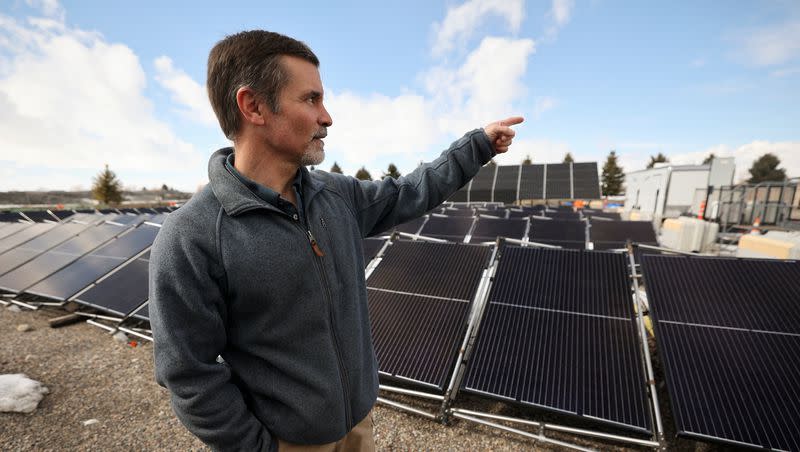
Kurt Myers is surrounded by all sorts of computers and monitors. Some of the monitors are the size of a big screen TV, while others crowd multiple desks next to him.
He points to one monitor in particular that is livestreaming energy generation, weather conditions and more from a distance some 7,200 miles away from his location at the Idaho National Laboratory near Idaho Falls.
It is a remote office in Kuwait staffed by the U.S. Army that also includes a latrine. Both relied on diesel fuel as their sole source of power generation until the laboratory deployed a test demonstration microgrid project to rope in renewables so the military branch can be more self-sustaining and produce fewer carbon emissions.
Microgrids and new, diverse power generation
Myers can look at one of the monitors and determine solar generation and overall energy output at this military post in Kuwait. Diesel generators running on a “low” load of output are inefficient, and it is hard on equipment as well, he said.
“We tell it when to start and when to stop,” otherwise, he added, “Before, it’s like driving your car and you keep stomping on it and slamming the brakes and you just run it down until it will get very low.”
Instead, Idaho National Laboratory runs its real-time sophisticated equipment to determine, for example, when to power up the generators or when to back off.
“We don’t want to start the generator at 6 in the morning as the sun is coming up, so we will wait,” he said.
Conversely, Myers said if there is forecast cloud cover, the microgrid will turn to diesel power generation.
“We have a program to run the generators to an optimum energy efficiency level.”
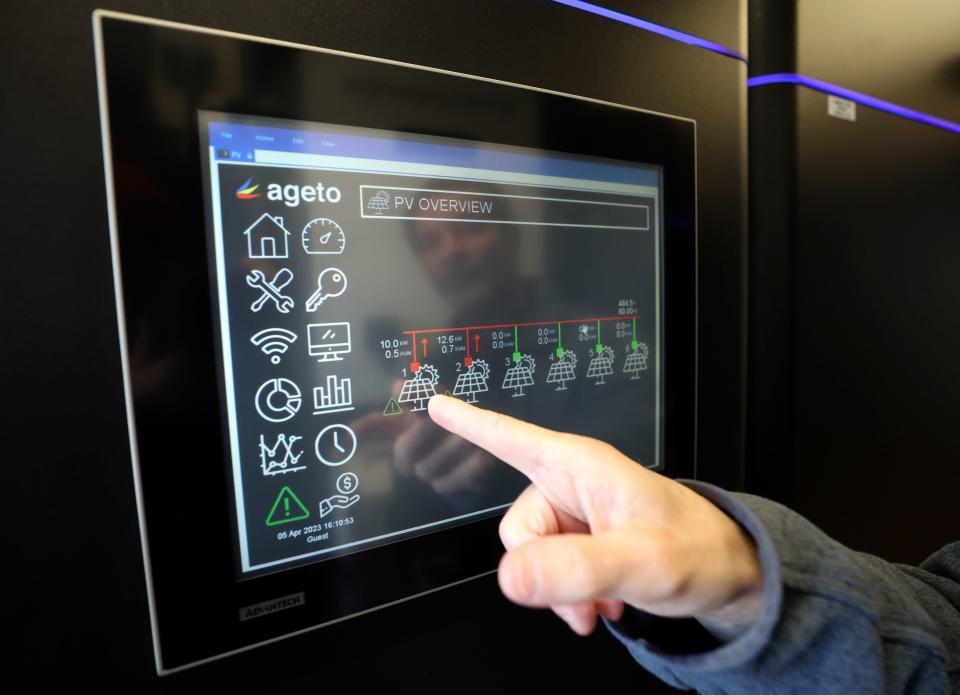
He said the demonstration project has proven to be successful.
“So this has been running for almost a year now, next month. Our analysis so far is we are saving about 65% on the prior fuel usage and that shows you what you can do for the system that doesn’t even include wind or hydro.”
Related
What’s the future of energy in the West? More renewable energy, less coal, new nuclear projects
How much money does renewable energy make for rural Utah’s economy? It’s more than you’d think
Idaho National Laboratory on its own site has a microgrid, which Myers said is at below net zero emissions, roping in wind and solar, with storage capability and the goal of someday incorporating hydrogen power from a big chamber that the agency is running through its tests.
The idea is to build a system — not just microgrids — that can smoothly integrate carbon-free energy such as wind, solar, hydropower, hydrogen and battery storage that taps this technology to reduce harmful emissions and make power systems more diverse and integrated.
“We’ll see a lot of fingers and players trying to drive that. It’s going to get more and more critical that the higher percentage level of wind, solar, hydro, geothermal — with whatever comes on the grid — to try to get these systems developed and come together,” Myers said.
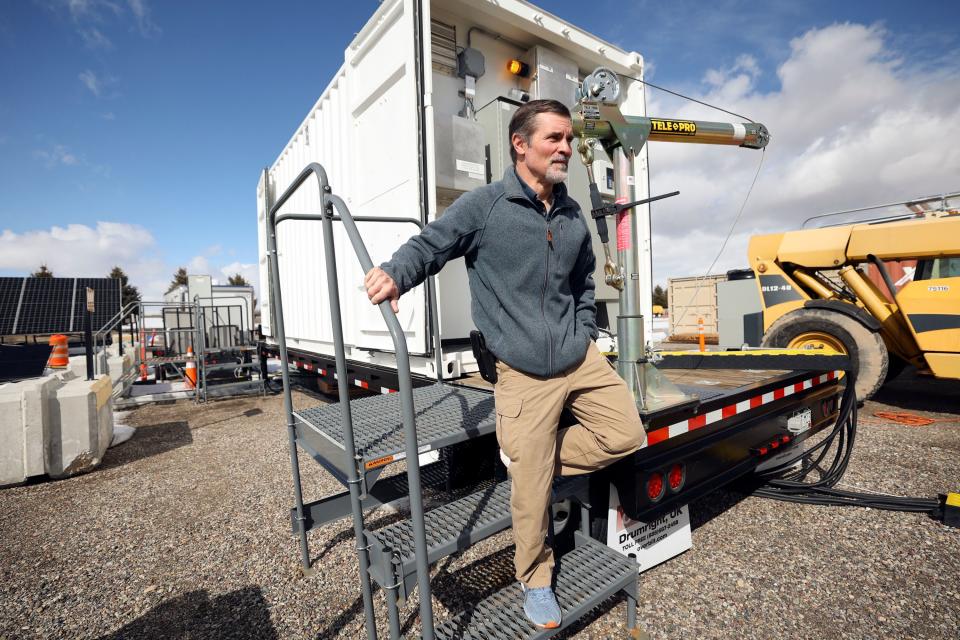
The future of achieving redundant power
“So my group does a lot of with with the military’s Department of Defense in helping them with energy and power projects and bringing in additional resiliency and try to decarbonize,” Myers said. “You know, it’s little by little, and of course with them the mission is always the primary thing, but we are helping them realize that there are other ways to achieve that and help make themselves more resilient.”
Related
He added that the military uses a lot of liquid fuel in the arena of power generation and the U.S. Department of Energy’s national laboratories can help reduce that.
“Our assistance is helping them make headway and push the envelope and become more resilient so you’re not locked in to having to ship fuel every seven days.”
Related
Microgrids and the military, and yes, Utah
The Idaho National Laboratory works with the Department of Defense in more than 25 projects beyond what is happening in Kuwait.
“The nice thing about the laboratory here is we’re able to test components’ universe, different things that we want to do — kind of kick the tires and look under the hood. What what does this thing do? What does it not do? Where are the gaps? Can we inform industry? Hey, so we need these other features to be included in it and are they planning to do that soon,” Myers said.
In north Texas, it supported the development, design and implementation for the Pantex Wind Project, the largest federally owned wind project to date with its supply of 11.5 megawatts of generation that meets more than half of the facility’s electrical power.
Farther away, it supports microgrid development for the U.S. Navy in Guam, Sasebo, Japan, and the Bahamas.
In Utah, Idaho National Laboratory is actively helping Tooele Army Depot in Tooele County and the Army’s Dugway Proving Ground, the latter of which occupies an area the size of Rhode Island.
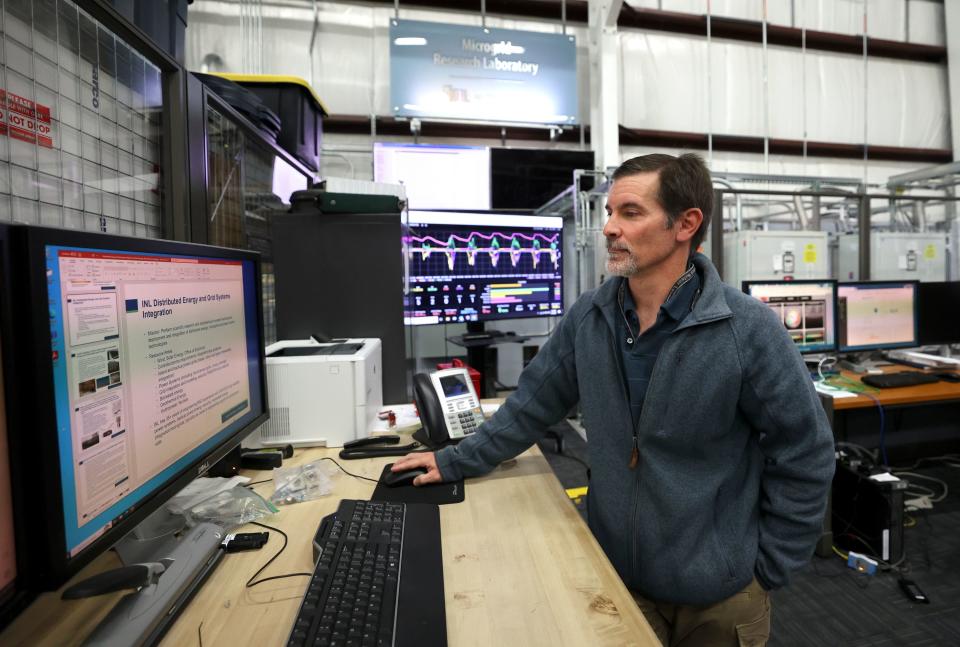
If the power goes down, critical emergency functions at Dugway would be in jeopardy.
“They have a single (power line) going out there that is 45 to 50 miles long. The cost to run another production line from a different part of the grid is pretty high,” Myers said. “So then you look at well, what’s the cost comparison between doing that and putting, you know, some solar and batteries and having a backup power plant. It just comes down to the business case and the value of that critical load or that resiliency.”
Right now, Dugway generates 2 megawatts of energy from solar, which R. Jason Reed, Dugway’s chief of environmental programs within the directorate of public works, pointed out is not very much.
Dugway is well on its way for a microgrid and is readying for the installation phase.
“There are a lot of kinks and quirks that need to be dialed in and figured out that will inevitably control the electrical loads of two substations and emergency power generation as well,” Reed said.
The idea, Reed said, is to provide an automated, remote switching capability to the microgrid during emergencies should the main grid fail and then when it is back up, switch back to the main grid.
That single power line is a vulnerability for Dugway, with Reed adding that reliable, recurring power is of great importance.
“The ability for us to lose power and therefore use our two megawatts to continually to operate emergency aspects of the defined critical areas of the installation is profound. It’s a game changer for us.”
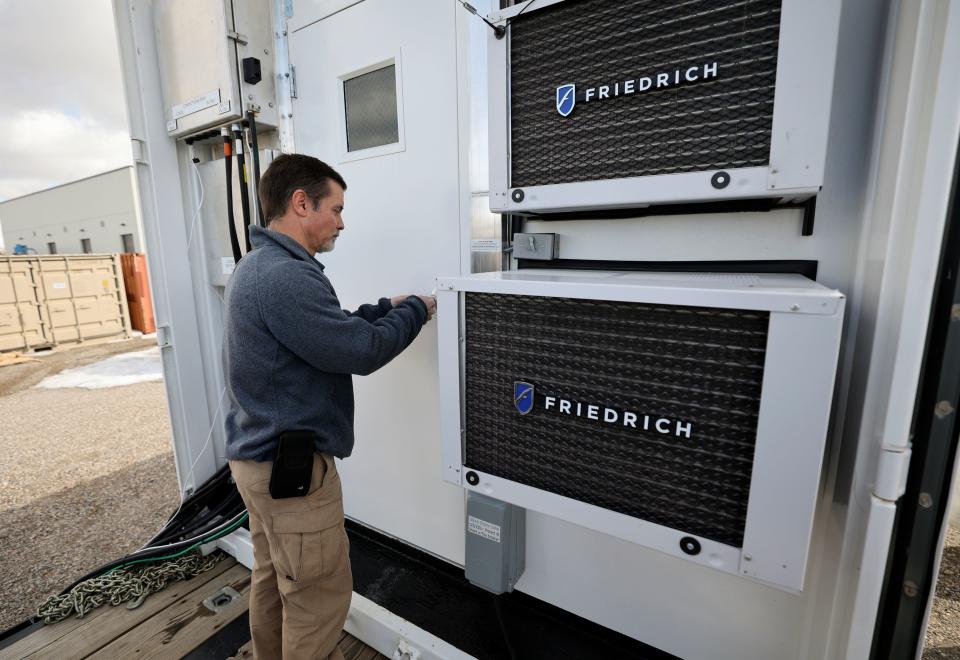
Related

